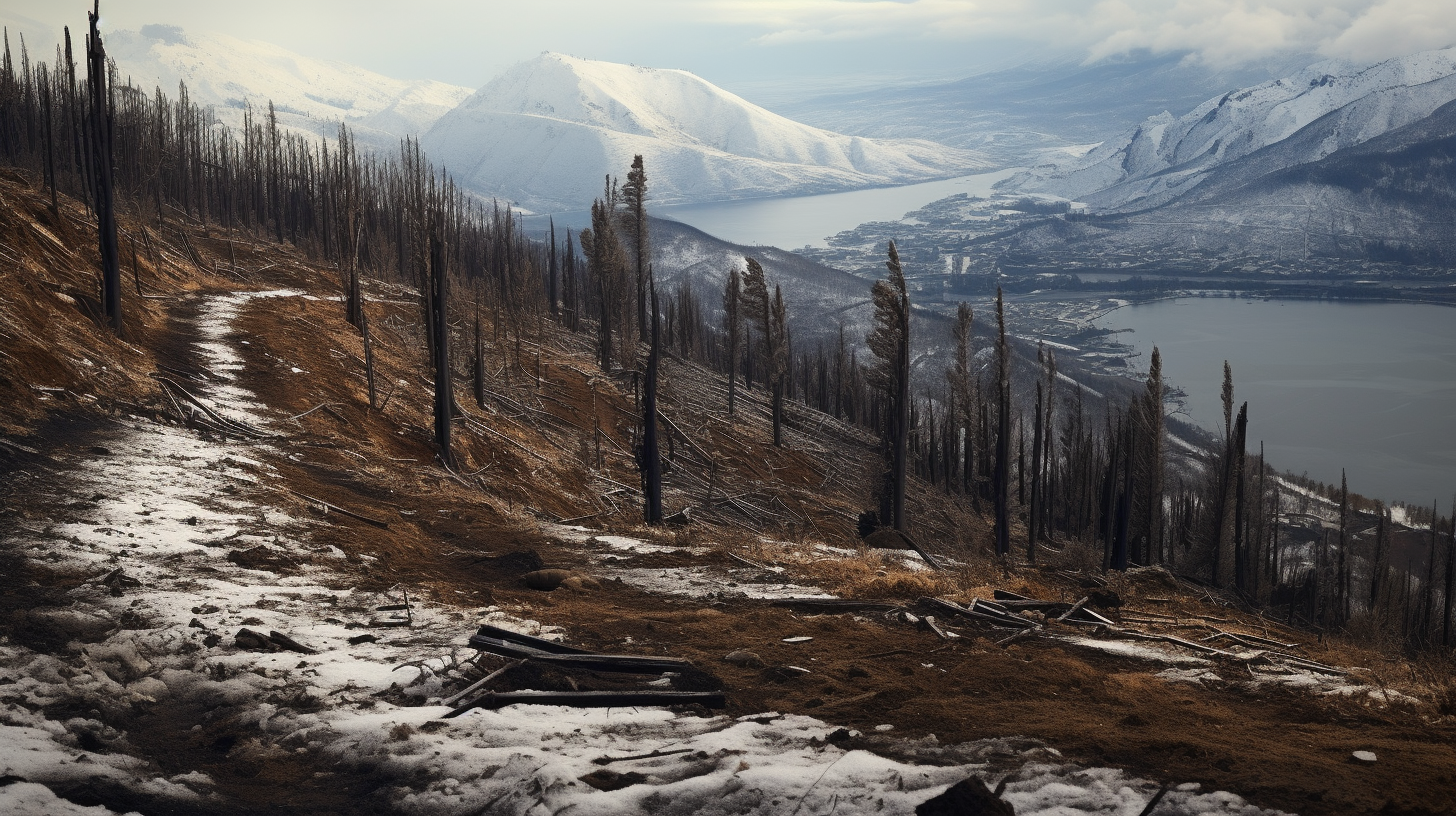The radiance of the sun glistening on a blanket of fresh powder on ski slopes once held the promise of exhilarating escapades and seasonal splendor. Now, the slopes lay bare, scathed by the relentless, unforgiving sun – a stark reminder of the winters we’ve squandered. ‘The Scorched Ski Slopes: Winters Without Snow’ delves into the grim reality of climate change, where ski resorts echo with the ghosts of winters past, and the vibrancy of snow sports is reduced to relics in a world defiant of snowy reprieves.
As the end of 2023 approaches, one cannot help but remember – it was a year devoid of winter’s traditional hallmark. Adapting to a landscape unrecognizable to our ancestors, we set off on a journey across these bare grounds. What was once the quintessential playground for winter athletes now stands as arid and desolate as a desert, where snow machines cough out a synthetic semblance of hope.
Alpine communities, once thriving on winter tourism, grapple with an existential crisis. Shops stand closed, ski rentals gather dust, and the aroma of hot chocolate and roasting chestnuts fades into the aberrant warmth. Local economies, tethered to these seasonal booms, face down a steep economic slope sans the thrill or anticipation of any ascent.
‘When Snowfalls Are But Ancient Memory’ and ‘Haunting Hailstorms – Frozen Fury in a Warm World’ have previously chronicled the poignant loss of winters and the ironic increase in violent hailstorms, yet the gravity of our scorched ski slopes adds a visceral dimension to the narrative. This article spins the tale of ski slope attendants, now repositioned as custodians of a nearly-forgotten craft, as they fondly, yet painfully, recount stories of children laughing under a gentle flurry – a sound that fades more each year.
Resort owners, once purveyors of winter joy, have metamorphosed into unwilling historians, guiding visitors through museums of snowboards and skis, artifacts displayed not for inspiration, but for epitaphs of a colder time. Environmental experts weigh in on the transformation’s toll: the ecological upheaval is not merely about the loss of recreation, but the destruction of a delicately balanced biome that has repercussions on the global stage.
Climate models bleakly highlight the cascade of consequences from vanishing snowpacks – diminished freshwater reserves, altered river flows, and disrupted habitats. Scientists urge us to consider these slopes as canaries in a coal mine, warning of much steeper drops that jeopardize not only the world of winter sports but also our very existence.
In this distressing account, the allure of winters’ past is palpable. Readers are drawn into a funerary waltz, mourning the loss of crystalline realms once abundant. Yet, the narrative does not spare any pain; it is a dire admonishment, indicating the high stakes and irreversible choices made. The discourse offers no respite – for the dystopia exemplified by the scorched ski slopes is an abysmal pit from which no snowflake returns.
